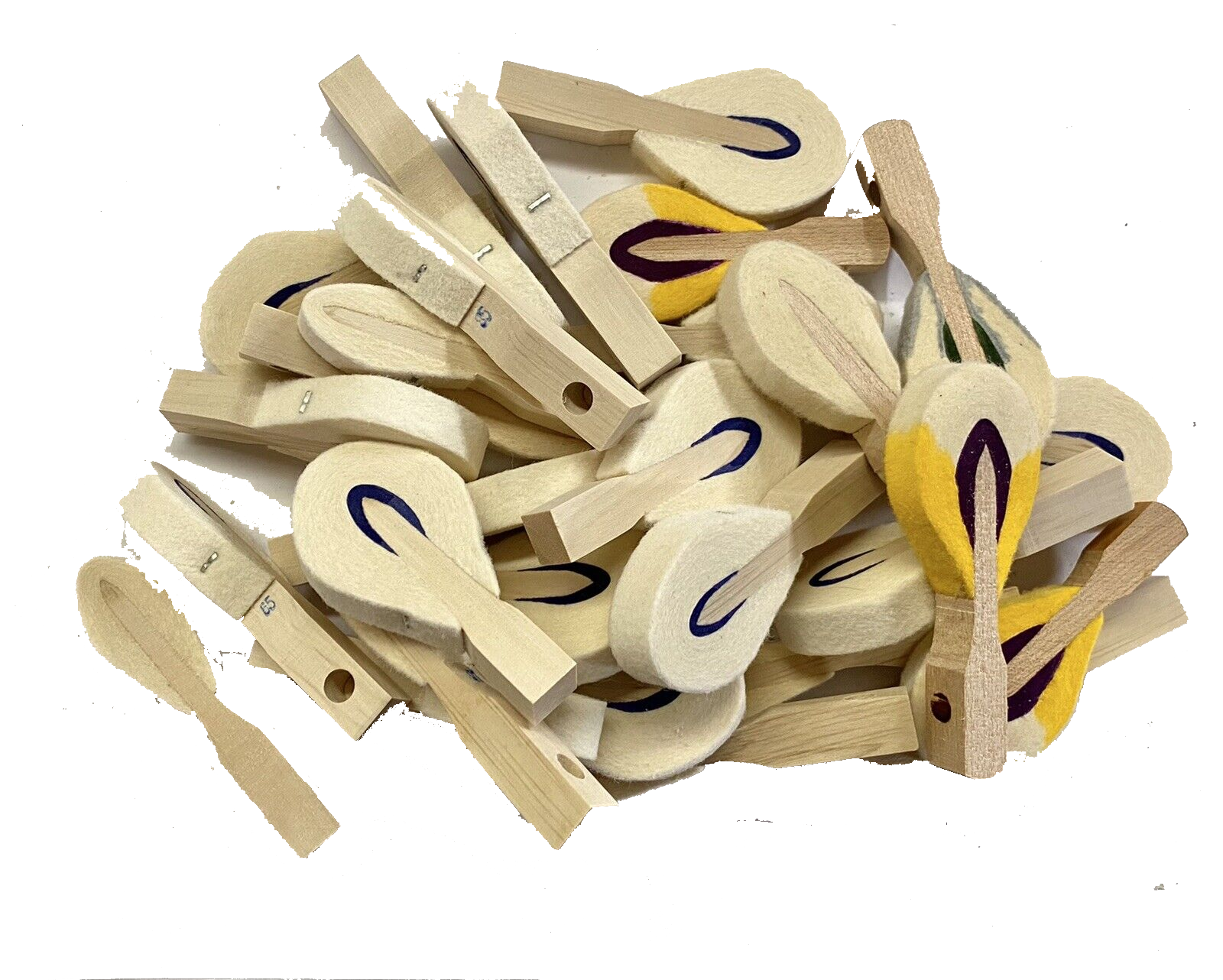Service
All Your Piano Maintenance Needs
TUNING
There are several types of piano tuning methods, each with its own approach to achieving accurate and pleasing pitch relationships between the notes.
Regulation & Voicing
Piano regulation adjusts mechanical components for accurately, evenly, and responsively playing. Voicing, adjusting the tonal characteristics of the piano hammers.
REPAIRS
There are various types of piano repairs that may be necessary over the course of a piano’s lifespan.
Appraisals
When we appraise a piano, we take into account a variety of factors to determine its value.

Tuning Services
When appraising a piano, experts take into account a variety of factors to determine its value.
Equal Temperament or Standard Tuning (Tuned to Concert Pitch 440Mhz)
Equal temperament is the most widely used tuning system in Western music. It divides the octave into 12 equal parts, which means that all semitones (half steps) are of equal size.
“Equal Temperament Tuning” is often referred to as “Standard Tuning.” – Standard tuning method is most often used with Concert Pitch as a Reference.
Concert pitch, also known as international standard pitch, is the standardized tuning system in which the note A above middle C is set to vibrate at precisely 440 hertz (Hz). This means that when the A above middle C is played on a properly tuned instrument, it will produce a sound wave oscillating at a frequency of 440 cycles per second.
Concert pitch serves as a reference point for tuning musical instruments. When musicians tune their instruments to concert pitch, it ensures that they are in harmony with each other, facilitating ensemble playing. It also allows for consistent and accurate performance across different instruments and orchestras.
The adoption of 440 Hz as the standard concert pitch is an international convention that has been in use for many years. However, it’s worth noting that in the past, different regions and historical periods have had varying standards for concert pitch, and some orchestras or ensembles may still use different pitches for specific repertoire or historical accuracy.
Advantages: This system allows a piano to be played in any key with consistent intonation. It is well-suited for playing in multiple keys or for ensemble playing.
Disadvantages: While it provides versatility, some argue that it may compromise the purity of certain intervals compared to other tuning systems.
Intonation
Just intonation is a tuning system based on pure, simple frequency ratios between notes. This means that intervals are tuned to whole number ratios.
Advantages: Just intonation can result in very pure, harmonically rich intervals. It can be particularly effective for specific types of music, such as acapella vocal ensembles or certain chamber music.
Disadvantages: It limits the keys a piano can effectively play in. Adjusting to different keys requires retuning.
Well Temperament
Well temperament is a historical term that refers to various systems of tuning that were used before the widespread adoption of equal temperament. These systems aimed to provide a compromise between different keys, allowing for pleasant-sounding music in a variety of tonalities.
Advantages: Well temperaments offer a compromise that allows for more expressive playing in a wider range of keys compared to just intonation.
Disadvantages: Like just intonation, it still requires retuning for different keys, though less frequently.
Meantone Temperament
Meantone temperaments were prominent in the 16th and 17th centuries. They used a specific system of tuning that aimed to produce pure thirds at the expense of other intervals.
Advantages: Meantone temperament provides very pure major and minor thirds, making it suitable for music emphasizing those intervals.
Disadvantages: It makes certain keys, particularly those with many accidentals, sound out of tune. This led to the development of well temperaments.


Regulation & Voicing
A well-regulated piano provides a responsive, even touch, and a balanced, beautiful tone across all registers. It’s an essential part of keeping a piano in optimal playing condition. Professional piano technicians are trained to perform these adjustments, and regular regulation is a key aspect of piano care.
Regulation
Action Regulation
Key Height: The height of the keys is adjusted to ensure that they respond evenly and consistently when pressed.
Key Dip: This is the distance a key travels when depressed. It is set to allow the hammer to strike the strings effectively.
Hammer Alignment: The hammers must be properly aligned with the strings to ensure accurate and controlled striking.
Escapement: This refers to the point at which the hammer is released after striking the string. It’s set to allow for rapid repetition of notes.
Let-off: This is the distance the hammer travels after escapement before being caught by the jack. It determines the loudness of a note.
Damper Regulation
Damper Height and Timing: The dampers (which stop the vibration of the strings) need to operate precisely to ensure smooth damping and sustain.
Pedal Adjustments
The pedals are examined and, if necessary, adjusted to ensure they function correctly. This includes checking the pedal heights and the functioning of the una corda and sostenuto pedals.
Regular Maintenance
Piano regulation is not a one-time task. It’s important for a piano to be regularly maintained and regulated to ensure consistent playability and sound quality.
Voicing
Voicing is an important aspect of piano maintenance and care. It allows the piano technician to customize the instrument’s sound to suit the preferences and musical needs of the pianist. A well-voiced piano can bring out the full expressive potential of the instrument.
Hammer Density
Voicing technicians may add or remove layers of felt from the hammers to adjust their density. A denser hammer produces a brighter tone, while a softer hammer produces a warmer, mellower tone.
Needling
Needling involves inserting needles into specific areas of the hammer felt. This can alter the density and elasticity of the felt, affecting how the hammer strikes the strings.
Filing
Filing the hammer surface can help achieve a smoother, more even contact with the strings. It can also reduce any uneven wear patterns.
Shaping
Shaping the hammers involves creating a consistent curvature across the hammer surface. This helps ensure that the hammer strikes all strings of a note simultaneously.
Voicing Techniques
Different techniques may be used, such as using steam to soften the felt or using specialized voicing tools to reshape the hammers.
Listening and Adjusting
The voicing technician will often listen to the piano as they work, making adjustments based on the tonal qualities they hear.
Tonal Goals
The specific voicing adjustments depend on the tonal preferences of the pianist or owner. Some may prefer a brighter, more brilliant sound, while others may prefer a warmer, mellower tone.
Evenness Across Registers
The goal of voicing is to achieve an even and balanced tone across all registers of the piano, from the low bass notes to the high treble notes.
Sensitivity to Player’s Touch
Voicing can also be tailored to accommodate the playing style and touch of the pianist.

Repairs
There are various types of piano repairs that may be necessary over the course of a piano’s lifespan.
Replacing Worn Parts
Over time, various components of the piano action, such as hammers, dampers, and felts, may become worn and need replacement.
Repairing Broken Strings
If a piano string breaks, it needs to be replaced. This involves removing the old string and installing a new one, then tuning it to the correct pitch.
Generally there are two types of Strings:
Plain Wire: This type of string is a single, solid wire with a uniform diameter along its length. It is used for the higher notes on the piano.
Wound Wire: This type consists of a core wire with a layer of wire wound around it. The outer winding is usually made of a softer metal, such as copper or bronze. Wound strings are used for the lower notes on the piano.
Fixing Sticky Keys or Stuck Action
Sticky keys or an action that doesn’t move smoothly can be caused by a variety of issues, such as worn or misaligned parts, dirt or debris, or humidity-related swelling. These issues can be repaired by a technician.
Regluing Loose or Detached Parts
Glue joints can become loose over time due to temperature changes or other factors. Repairing these joints involves re-gluing the parts to ensure stability.
Replacing or Refurbishing the Soundboard
If the soundboard becomes damaged or develops cracks, it may need to be replaced or refurbished to maintain proper resonance.
Pedal Repairs
Pedals can become loose or misaligned and may need to be adjusted or repaired.
Key Replacement
If keys are damaged or severely worn, they may need to be replaced.
Climate Control Systems
In environments with extreme temperature or humidity fluctuations, installing a climate control system can help protect the piano from damage.

Appraisals
When appraising a piano, experts take into account a variety of factors to determine its value.
Age and Manufacturer
The age of the piano and the reputation of the manufacturer play a significant role. Pianos from reputable, well-known manufacturers tend to hold their value better over time.
Piano Type and Model
Grand pianos generally have higher market values than upright pianos. Within each type, specific models or series from reputable brands may command higher prices.
Condition
The condition of the piano is crucial. A well-maintained piano with minimal wear, free from significant damage or defects, will have a higher value.
Tuning Stability and Playability:
A piano that is in tune, with a well-regulated action, will be more valuable than one that requires extensive tuning and repairs.
Sound Quality and Tone
The tonal quality of a piano is a critical factor. Pianos with rich, balanced, and expressive tones tend to be more valuable.
Originality
Pianos that retain their original parts and components, especially if they are from a sought-after vintage or era, may have higher value.
Historical or Collectible Significance
Some pianos may have historical significance or be considered collectibles due to their association with a famous maker, artist, or period.
Market Demand
The demand for specific types or brands of pianos can fluctuate over time and may influence their value.
Provenance
The history of ownership or any notable events associated with the piano can affect its value. For example, if it was owned by a famous musician or used in a significant performance, it may have a higher value.
Restoration or Refurbishment
Pianos that have undergone professional restoration or refurbishment, especially if it has been done using high-quality materials and techniques, may have an increased value.
Additional Features or Accessories
Unique features, special finishes, or accompanying accessories (such as a matching bench or a custom cover) can add to the value of a piano.

Moving a Piano
Moving a piano is a delicate process that requires careful planning and execution to ensure the safety of the instrument and those involved. Here are the key considerations when moving a piano
Contact Us
Give me call on or fill in online form and I’ll shall give you a call back to discuss your requirements and make an appointment.
+44 (0)7981 056237
114 Glen Rd, West Cross, Swansea, SA3 5QJ



